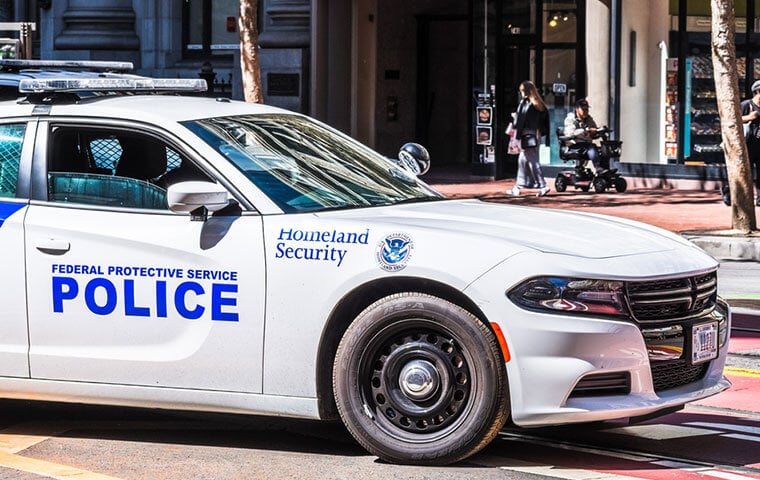 The FPS currently has a vacancy rate of 21 percent, with shortages in offices including one responsible for verifying training of some 13,000 guards working under contract to the agency. Image: Sundry Photography/Shutterstock.com
By: FEDweek Staff
The FPS currently has a vacancy rate of 21 percent, with shortages in offices including one responsible for verifying training of some 13,000 guards working under contract to the agency. Image: Sundry Photography/Shutterstock.com
By: FEDweek StaffThe GAO has renewed concerns about the physical security in federal buildings, saying that in tests it conducted of whether prohibited items can be smuggled into buildings, security guards failed to detect items such as pepper spray, a baton or a knife in 13 of the 27 tests.
At a House hearing, a GAO witness presented those findings as preliminary results of an ongoing study, noting that federal real property has been on its high-risk list since 2003, “in part due to threats to federal facilities.” In similar covert tests conducted by the GAO in 2009, he added, the “we carried components of improvised explosive devices into federal facilities, undetected by FPS guards.”
The Federal Protective Service—the arm of DHS responsible for security at thousands of federal facilities—“conducts its own covert tests, the results of which were consistent with GAO’s tests,” he said. GAO did not give the precise results, though, saying the FPS considered them as law enforcement-sensitive.
“We found these security vulnerabilities were potentially caused by insufficient training for guards and FPS’s failure to maintain a comprehensive system to ensure that guards were appropriately trained. Other challenges included staffing levels, human capital management, and inconsistent guidance about how and when guard inspections should be performed,” he said.
He said that the FPS currently has a vacancy rate of 21 percent, with shortages in offices including one responsible for verifying training of some 13,000 guards working under contract to the agency. Further, officials of two tenant agencies GAO contacted, IRS and SSA, “expressed frustration with the lack of contract guards available to stand post at federal facilities.”
IRS officials said that “guard shortages have caused problems, security vulnerabilities, employee delays, and increased traffic due to closed entrances,” while SSA officials said that FPS “has been unable to provide a sufficient number of contract guards in the last 3 fiscal years, resulting in 510 offices that were closed for several hours or a full day.”
The witness credited the FPS with steps taken in response to GAO’s earlier work, including establishing data systems to better track that posts are staffed by qualified guards. However, that system has not been fully implemented in any region and “continues to face technology, data reliability, and interoperability challenges and has not delivered the promised capabilities.”
“Failure to keep prohibited items out of federal facilities can compromise the safety of the people who work in and visit them. Moreover, threats to federal facilities persist even as FPS is experiencing a shortage of staff to provide oversight for the contract guard workforce. Therefore, it is essential that FPS improve the guards’ success rate in detecting prohibited items and provide oversight of the contract guard workforce,” he said.
The GAO did not make new recommendations because its work is ongoing.
OPM Advises Agencies on Conducting RIFs During Shutdown
Updated Shutdown Contingency Plans Show Range of Impacts
Use Shutdown as Justification for More RIFs, OMB Tells Agencies
Unions Win a Round in Court Disputes over Anti-Representation Orders
Deferred Resignation Periods End for Many; Overall 12% Drop
Senate Bill Would Override Trump Orders against Unions
See also,
How to Handle Taxes Owed on TSP Roth Conversions? Use a Ladder
The Best Ages for Federal Employees to Retire
Best States to Retire for Federal Retirees: 2025

